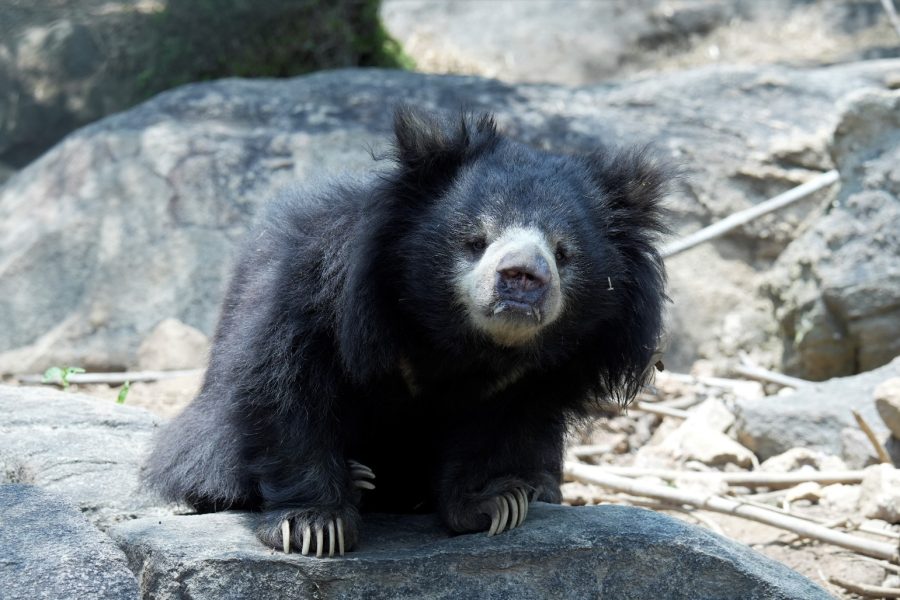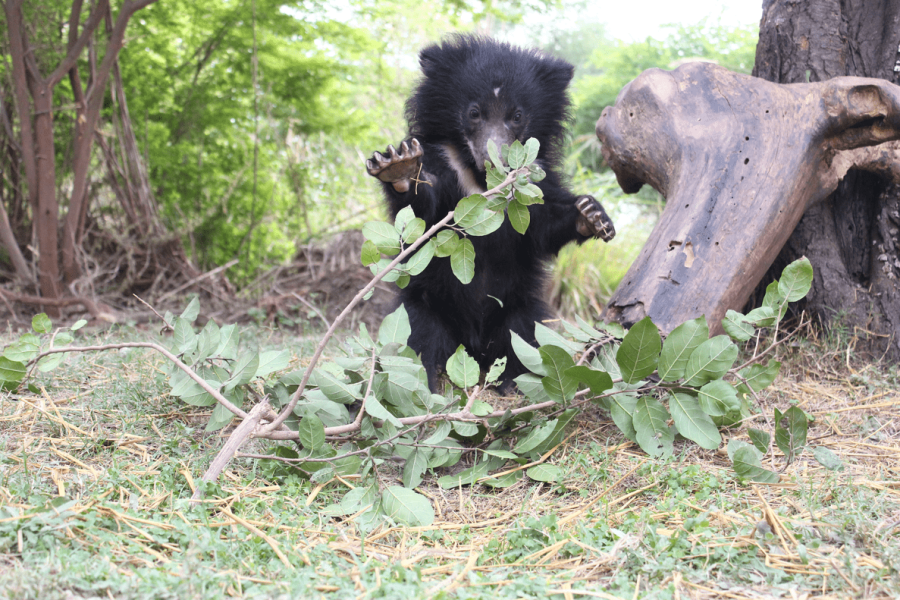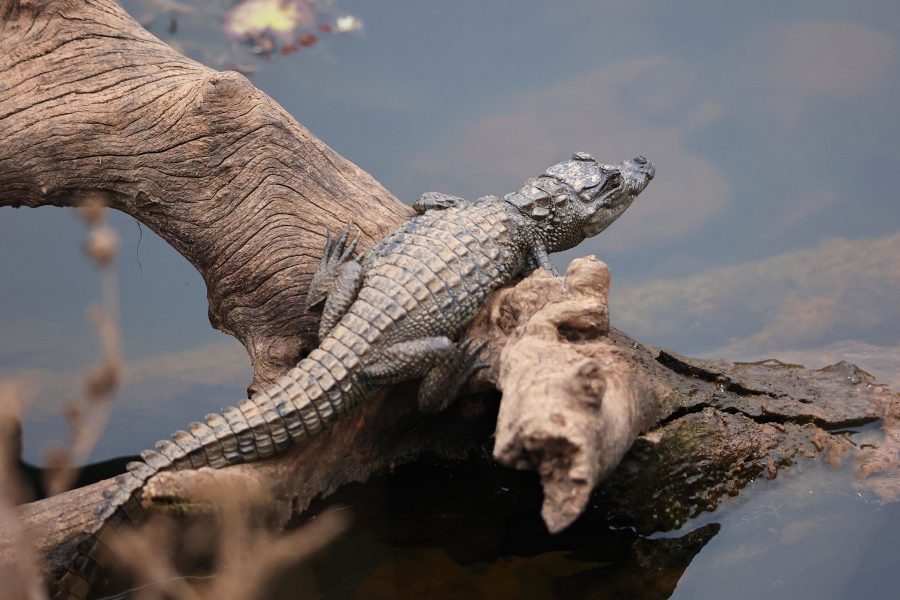 Wildlife SOS has programs working to try and inspire students to both care about wildlife and to take an active role in protecting it. When we run these programs we of course are always questioning if we are reaching the students and if they are hearing our message. The following is a letter from one of the students in our program in the state of Jammu and Kashmir. He is in the 12th Class at the Tyndale Biscoe School. We of course are thrilled that he has both learned about his local wildlife and is now taking an active role to protect it in a variety of ways. It is students like these that give us an immense amount of hope for the future of wildlife in India.
Wildlife SOS has programs working to try and inspire students to both care about wildlife and to take an active role in protecting it. When we run these programs we of course are always questioning if we are reaching the students and if they are hearing our message. The following is a letter from one of the students in our program in the state of Jammu and Kashmir. He is in the 12th Class at the Tyndale Biscoe School. We of course are thrilled that he has both learned about his local wildlife and is now taking an active role to protect it in a variety of ways. It is students like these that give us an immense amount of hope for the future of wildlife in India.
By Moazam Qadri
If you were of the view that cultivated plants and domesticated animals is what wildlife consistis of, you are mistaken. Wildlife, in fact, encompasses the innumberous varieties of wild plants, animals, fungi and microorganisms that exist on our planet earth, rather then just cultivated plants and domesticated animals. Knowingly or unknowingly, we largely depend on this wildlife for each fundamental requirment in our life. The food we eat, the clothes we wear, the medicines we consume, a variety of building materials used for construction, numberous chemicals used for manufacturing our necessities. All are extracted from the wildlife existing around us. A famous Kashmiri quote, “An poshe tele yele wan poshe,” also defines the significance of forests and wildlife conservation. It lays stress on the up keeping of forests and wildlife for sustenance of life and availability of food.
I am a huge animal lover- from my childhood I loved wildlife because it put me closer to nature and the creatues whose behavior I found fascinating. When I am surrounded by the natural world, all stress goes out and I feel whole and in touch with my feelings. This is the real beauty of Mother Nature, but unfortunately I see it being ignored and destroyed.
Talking about wildlife in Kashmir, most of us know about the bear and the world famous Hungul. However, what is less known are some shocking facts. I had my first shock when I learned that Kashmir is top ranked on the Human-Animal confict statistics. Many bears are killed by humans and likewise many humans are killed by bears in our Kashmir. These deaths are unnecessary and happen because of a sheer lack of understanding and awareness amonst us. These dreadful figures provoked a sense of duty for helping wildlife in me. I wanted to do something to protect these animals that are on the verge of extinction.
All I needed was a start into this fascinating and self-satisfying journey and fortunately, I didn’t have to wait long. In April 2012, I was on a visit to Dachigam Nation Park on account of a school project in Environmental science. For me, I could feel that this was it, I had always longed for being in such an environment, so close to nature. To say the least, I was impressed. There, I met Mr. Tahir Gazanfar who is working for Wildlife SOS. Because of my own interest, I remained in touch with Mr. Gazanfar and made frequent trips to Dachigam Park. After doing some thinking, I finally decided to join Mr. Gazanfar and do my bit to save the valuable wildlife resource. I became a volunteer for Wildlife SOS.
From then onwards, I have started voluntary work at the ‘Bear Rescue and Rehabilitation Center.’ It has hlped me to understand the nature of bears. There, we have 4 Asiatic black bears, one male and three females. I learned about their food habits, sleeping habits and much more. My respect for wildlife grew and is still increasing as I move deep into this field.
Now, curiosity about their progessing extinction grew inside of me. I began to wonder whether it was bears who had invaded the human territory and got killed or was it the other way around. As expected, again it is we humane, who have taken over their territories. People have set up orchards very near to bear territories which is allowing the bears to have easy access to much tastier food. This is the chief reason for the Human-Bear conflict. Now, as a volunteer, I have started making people aware of this fact on a personal level at school and in my neighborhood.
I worked at the center as a volunteer also cleaning the center sometimes. My real opportunity to work as a volunteer with Wildlife SOS came on 2nd February 2013- eve of ‘World Wetland Day.’ We went to the Hokarsar bird sanctuary. After a briefing, we went inside the lake in ‘Shikaras’ and explored the marshy land. There were only a few variety of birds due to the winter migration, but I found the flora had its own charm. The day trip lasted five hours and it was an amazing learning experience. Unfortunately, I learned that excessive man interference has put the bird sanctuary to threat.
Today, 21 March 2013, I went to the Dachigam National Park to attend a training course for wildlife census 2013. This census will be held from 24th March to 26th March. Our volunteer group worked in association with the wildlife department. We were trained to use the GPS, range finder and compass devices. We were also give the dress code, taught the walking style and trained in identifying an animal with direct an indirect evidences, and thus record every detail of the animals in a proper manner. I hope this event is a success and animals such as ‘Hangul’ or ‘bears’ are saved. This will only happen when we reduce the conflict between humans and animals. We need to respect our wild animals and people should be made aware of the fact that we are in their territory. let’s hope that we just stop this death of our natural heritage.





